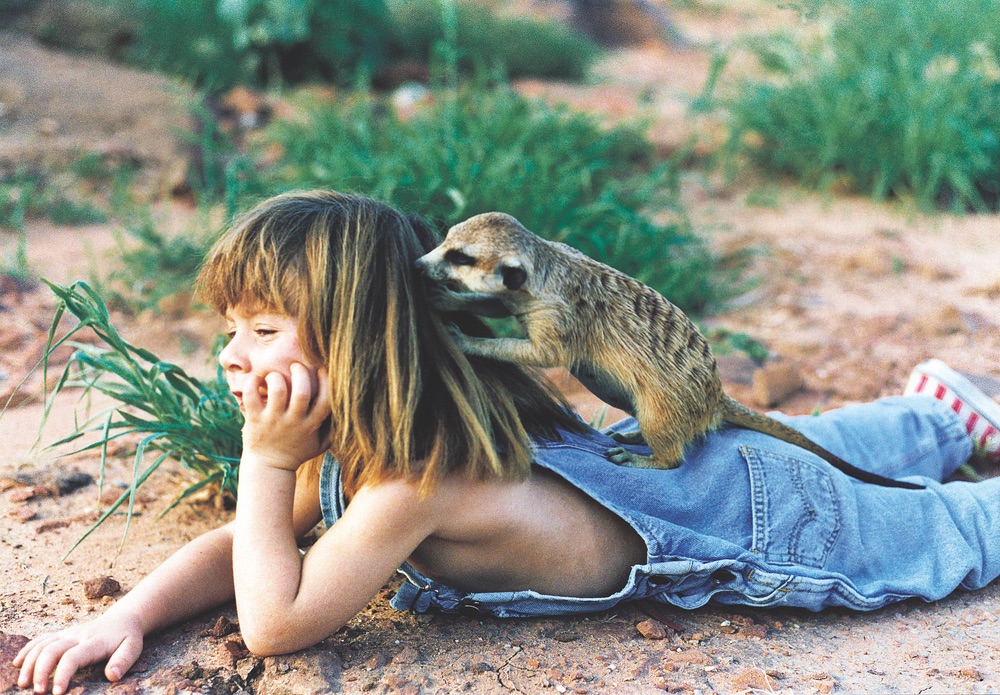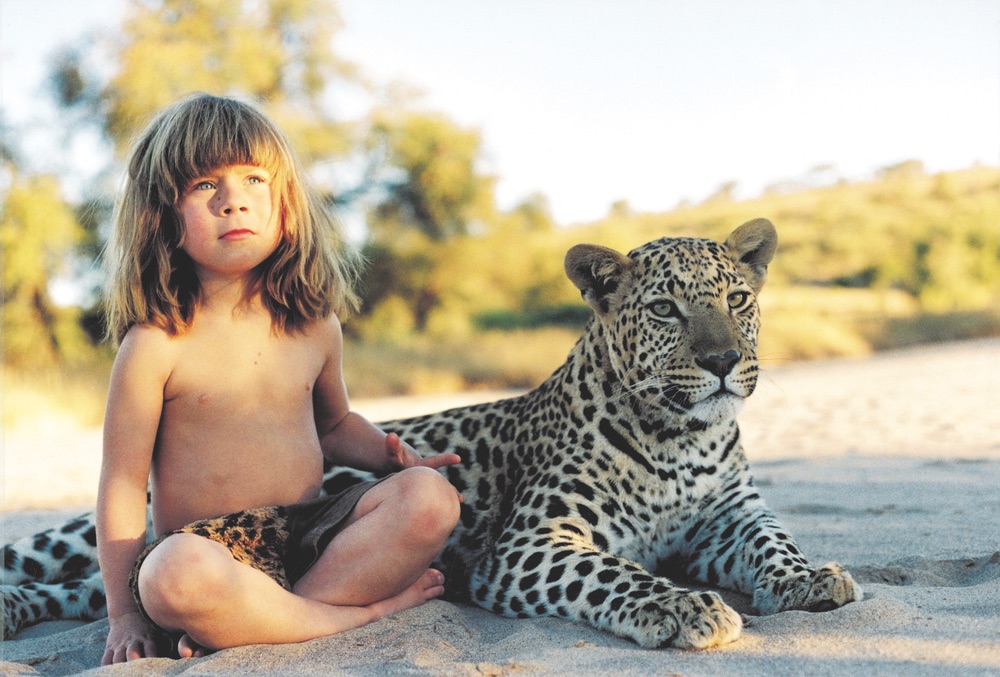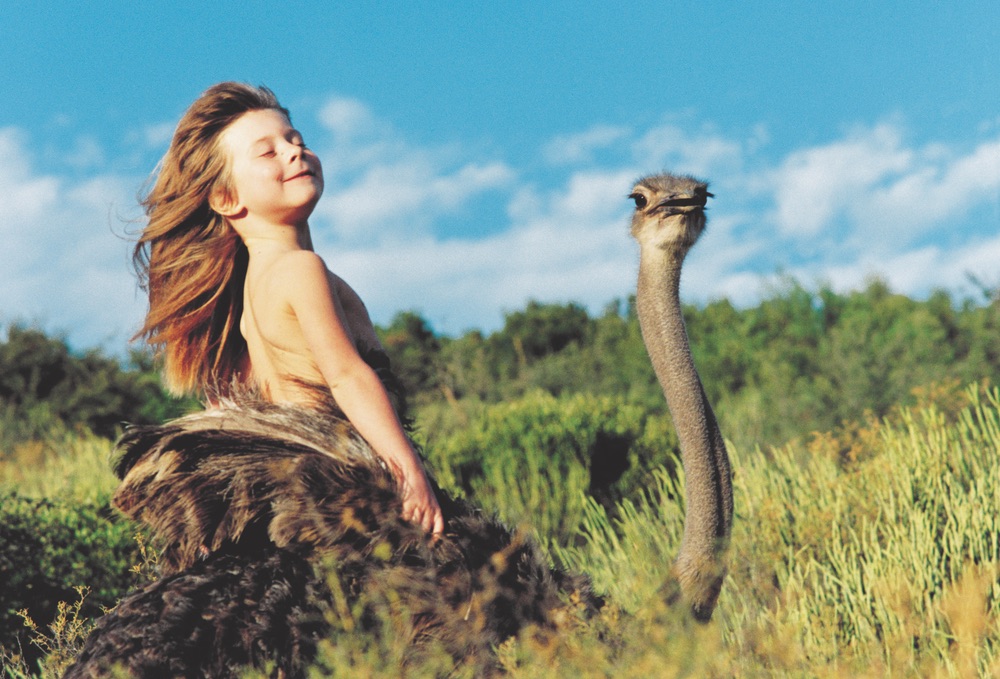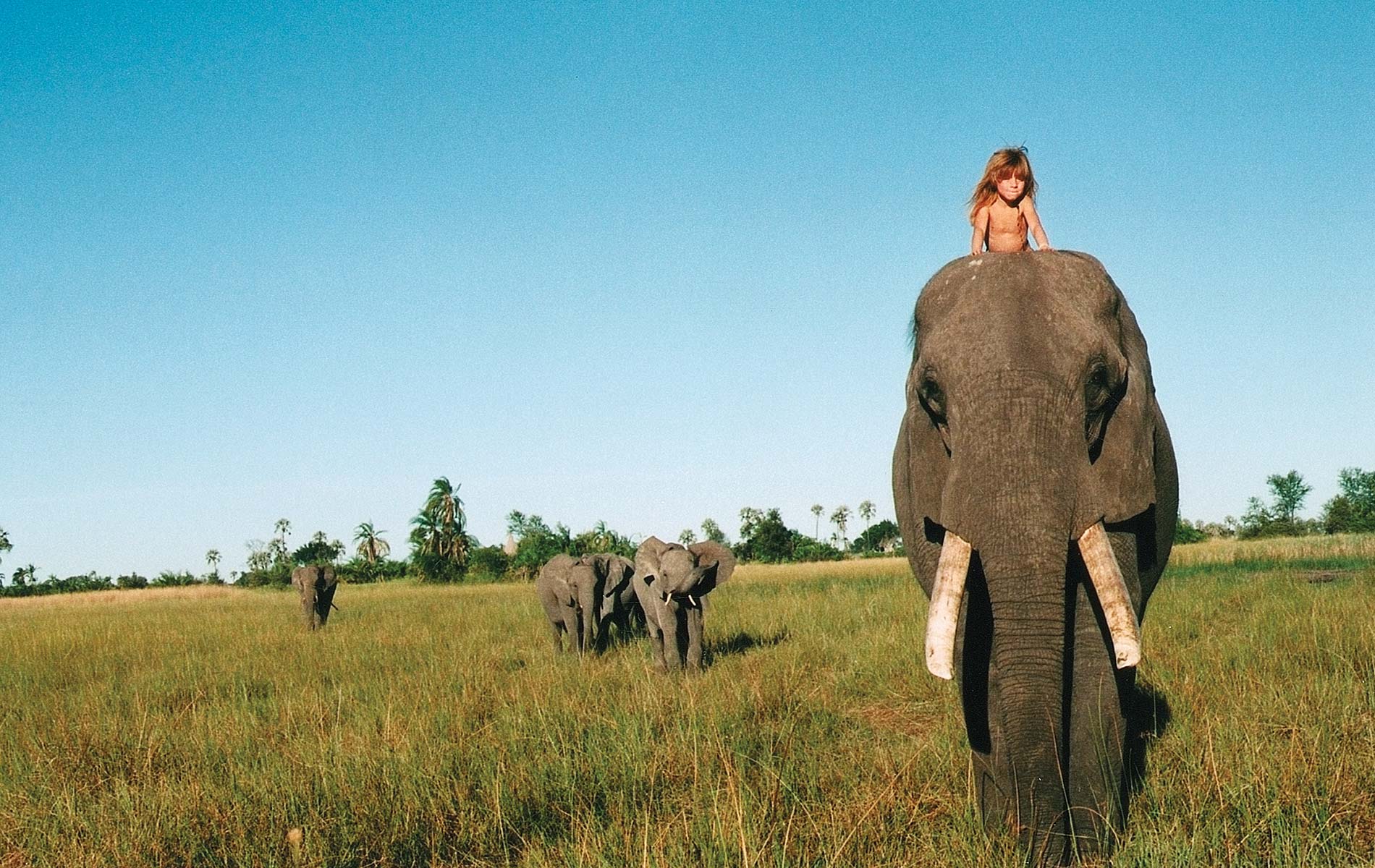
vie-magazine-tippi-feature
A Real-Life Jungle Book
Tippi of Africa
By Rebecca Barnes | Photography by Sylvie Robert
It’s not every day that you meet a child who has a real elephant for a best friend. Nor do you often witness a child riding on the back of an ostrich or even petting her feline friend who is not a normal house cat, but a real leopard. Yet this was a commonplace event in the life of one lucky girl who was born in Namibia and grew up in southern Africa for the first decade of her life. The girl is Tippi Benjamine Okanti Degré.
“My name is also Okanti, which means ‘mongoose’ in the Ovambo language, one of the Namibian tribe,” Tippi says on her website. “It can seem like a strange idea to call your daughter Mongoose, even if the word ‘Okanti’ sounds nice. It is, nevertheless, the beginning of my story.”
Like the fearless mongoose, Tippi became known for her daring and bold encounters with other members of Mother Nature’s wild kingdom.
Tippi’s parents, Sylvie Robert and Alain Degré, are French wildlife photographers and filmmakers who lived and worked for almost twenty years photographing and filming animals in southern Africa. They worked in national parks and wildlife reserves, living in tented camps in the bush. Tippi scarcely got a chance to meet other kids and naturally befriended all the animals she met. When her parents visited friends on wildlife farms, there was always an orphaned or rescued caracal, mongoose, or baboon living with the family and being raised by them. Tippi would take any opportunity to play with these animals, spending as much time as she could with them, while her parents documented their interactions in a series of captivating photos.
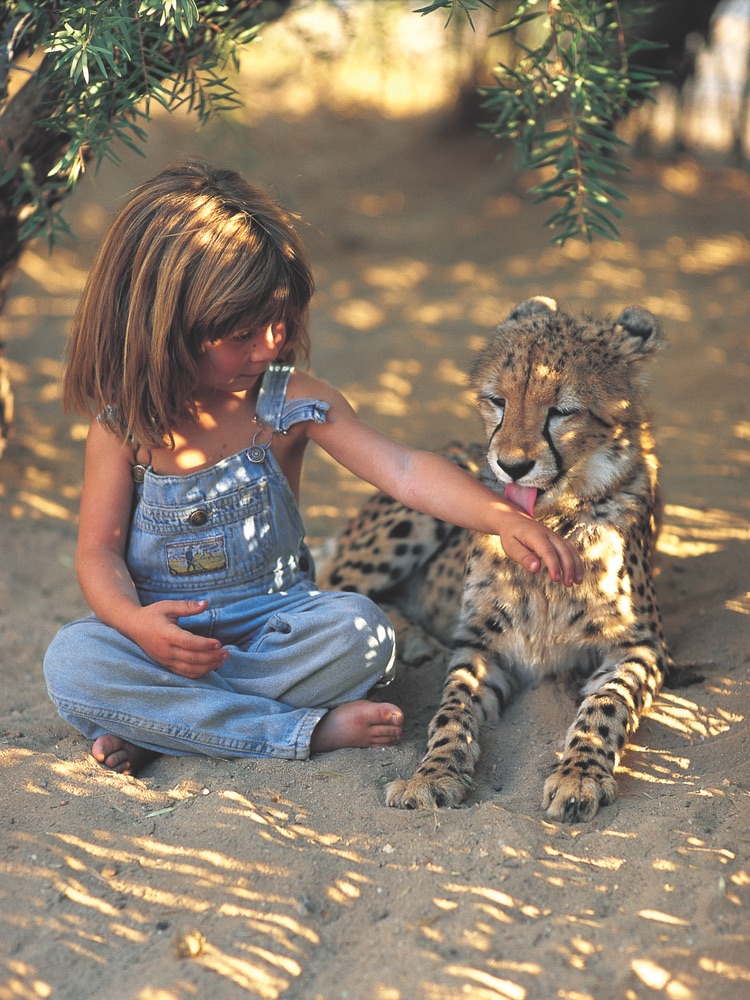
The family lived that life until Tippi was ten, when they moved back to her parents’ home in France. Tippi experienced culture shock moving away from Africa, and she missed her animal friends. She decided to share her experiences and insights from her time in Africa in a book, which she titled Tippi: My Book of Africa. The photos that captured her experiences with the animals are stunning and speak of the connection she shared with each creature.
Tippi became known as “the little girl who could speak to animals.” She says could communicate with them using her eyes, mind, heart, and soul—but mostly her eyes. After her family moved back to France, she would catch pigeons in the streets of Paris to cuddle them. They couldn’t be kissed, though, because they were not wild and clean like the animals she used to kiss in the bush.
Although Tippi says she believes in guardian angels, she doesn’t necessarily believe in God. Her connection with the animals seems to be a spiritual one, with an unspoken level of respect and understanding.
During her ten years in Africa, Tippi formed stronger relationships with certain animals than with others. One of them was Abu, a thirty-something-year-old elephant that Tippi first met when she was only one and a half years old. He belonged to Randall Moore, a friend of Sylvie and Alain, who brought Abu to Africa from a circus in the United States. This was one of Tippi’s favorite animal friends and she referred to him as her “brother.” She loved to sit behind his head, on his soft spot. Abu would follow her around like a babysitter, was always gentle with her, and was careful not to step on her. The kindness that Abu demonstrated is readily apparent in the photos of him with Tippi. In her book, Tippi says, “That is the way elephants are; they pay close attention to little ones.”
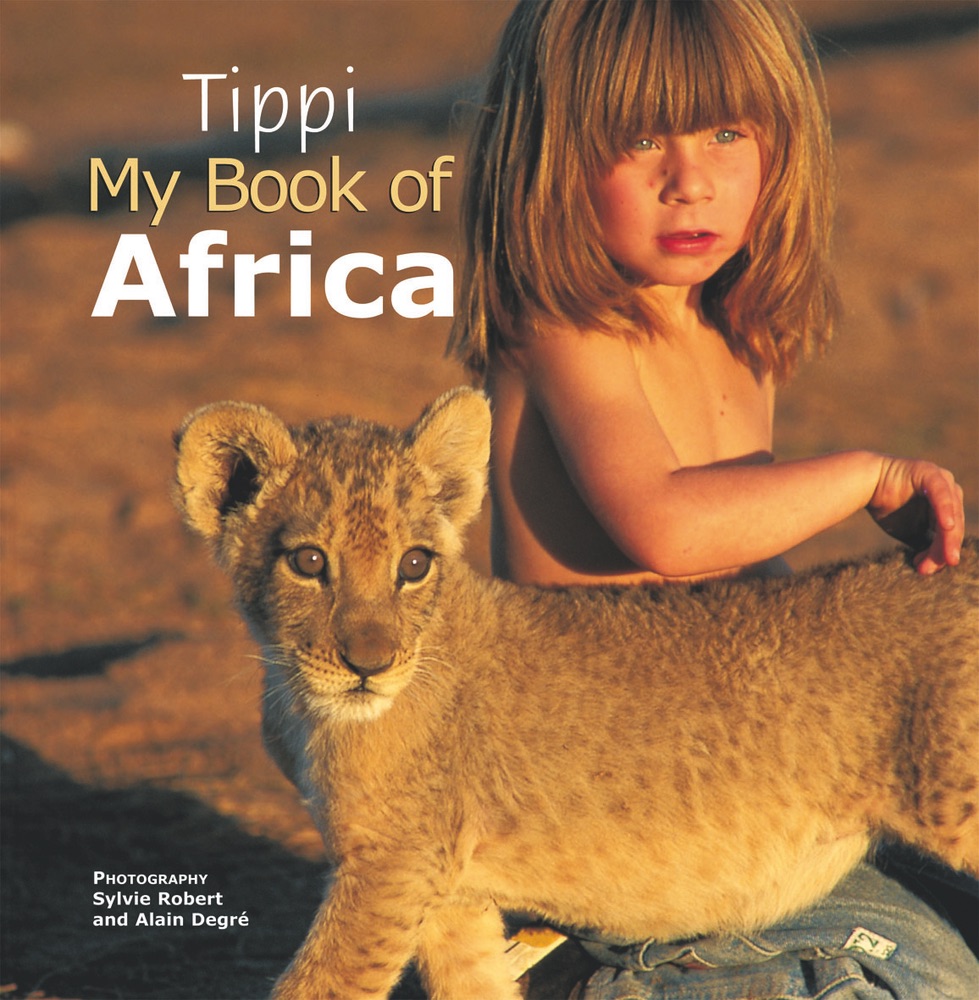

The leopard Tippi befriended, J&B, was hand fed and raised by people, but he was never tamed. The unlikely pair played together often, and he never caused her harm. In all her adventures with her leopard, cheetah, and lion cub friends, Tippi was never afraid, but of course, there were times her parents would not allow Tippi to interact with certain animals, such as one particular lion cub. His name was Mufasa and he is pictured on the cover of her book. Tippi and Mufasa played together when he was small, and the cub would even suck on her finger while she slept. They parted ways for a year and by the time Tippi saw him again, Mufasa had grown quite large. During their reunion, he accidentally knocked her over with his tail, and Sylvie and Alain were not at ease with this lion’s growing strength. The encounter ended, but the memories of the bond they shared are documented in Tippi’s stories and the photos her parents took.
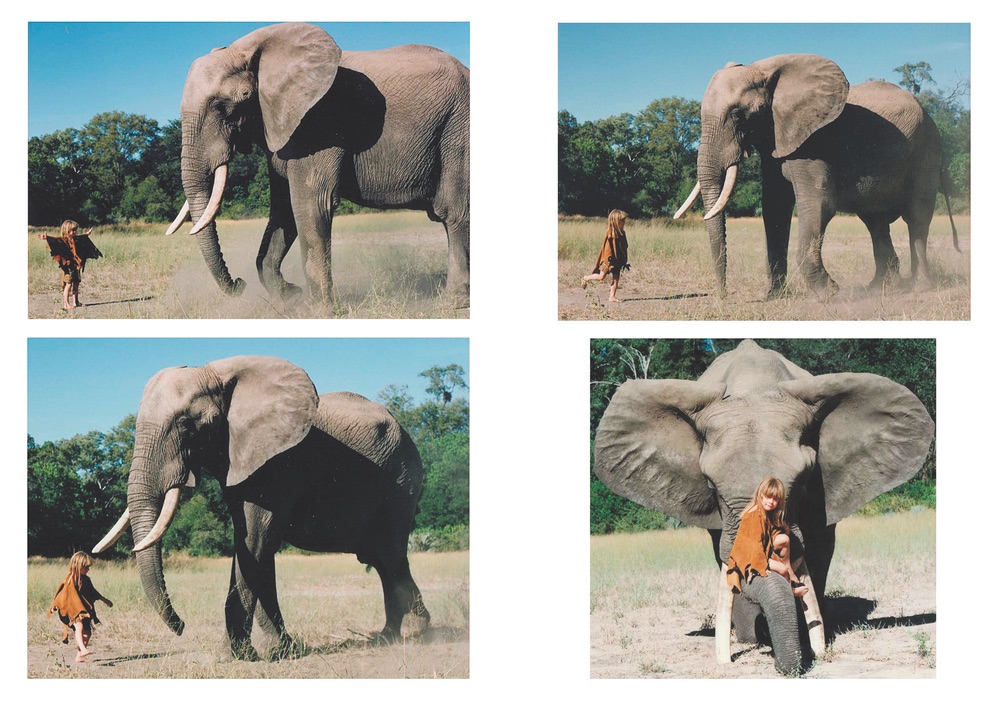
Tippi’s experiences don’t end there—her animal friends included meerkats, ostriches, bullfrogs, pythons, and more. She was especially fond of chameleons, which she had as everyday companions. Her journey, documented by the stunning photography, shows us that it is possible to connect silently with other species in nature if we show them the respect and reverence they deserve—when we show fear, we get something to fear in return. Tippi was never afraid of the animals. Children tend to trust before that trust has been earned, but for Tippi, it was not a matter of trust. She couldn’t afford to trust a wild animal when she did not belong to the same species and therefore didn’t live with the same codes. The main rule she permanently had in mind was what her parents had taught her: never to fear but always to be on the watch.
Tippi communicated with the animals, and it seemed that these animals sensed the respect and love that she had for them. These photos and memories are the proof, and the love between Tippi and her friends shines through.
— V —
To learn more about Tippi Degré and her adventures, visit www.tippi.org. Tippi: My Book of Africa is available for purchase through Amazon, Google Books, Barnes and Noble, and other major retailers.
Share This Story!
KEEP UP WITH THE LATEST STORIES FROM VIE



